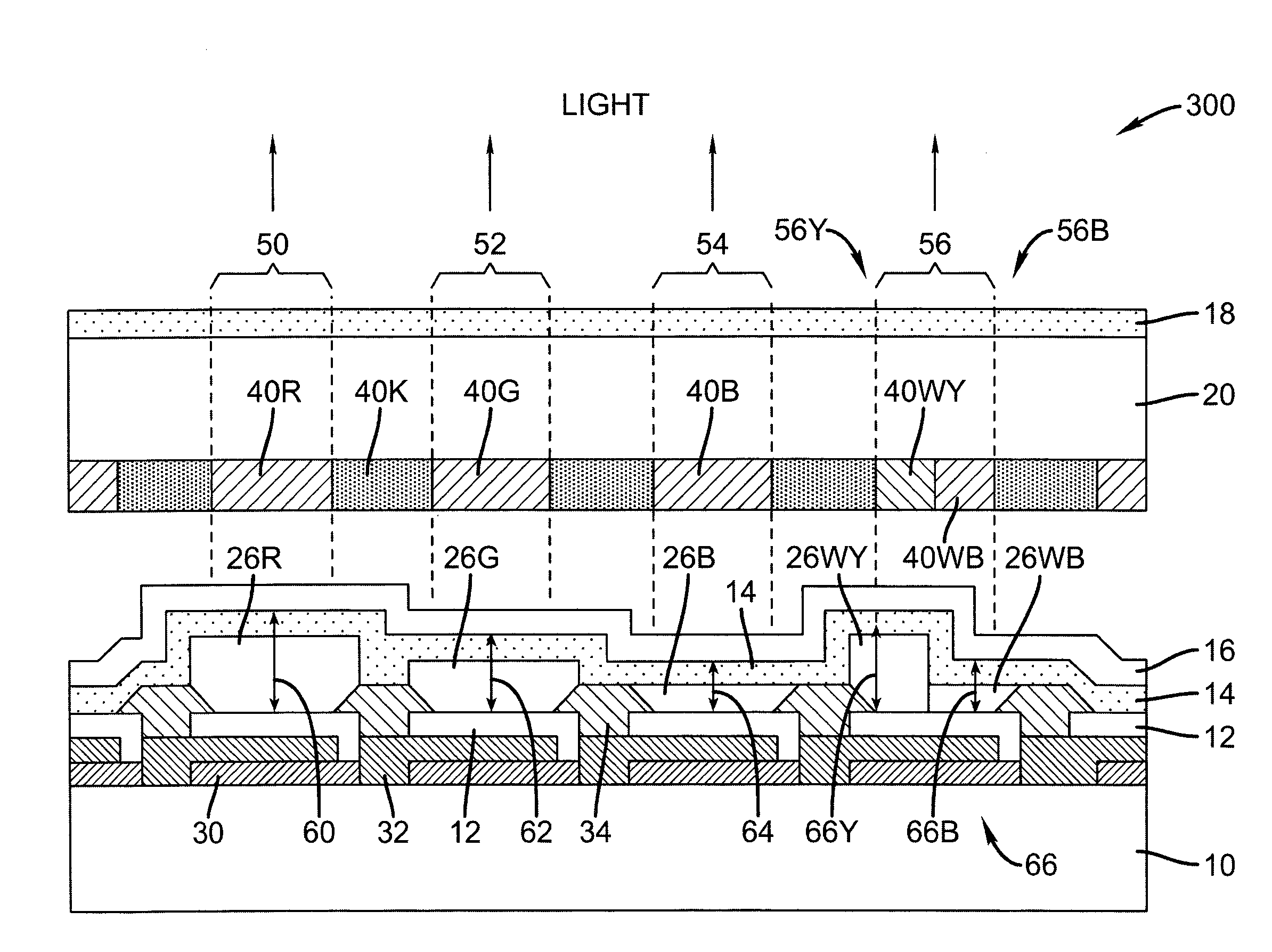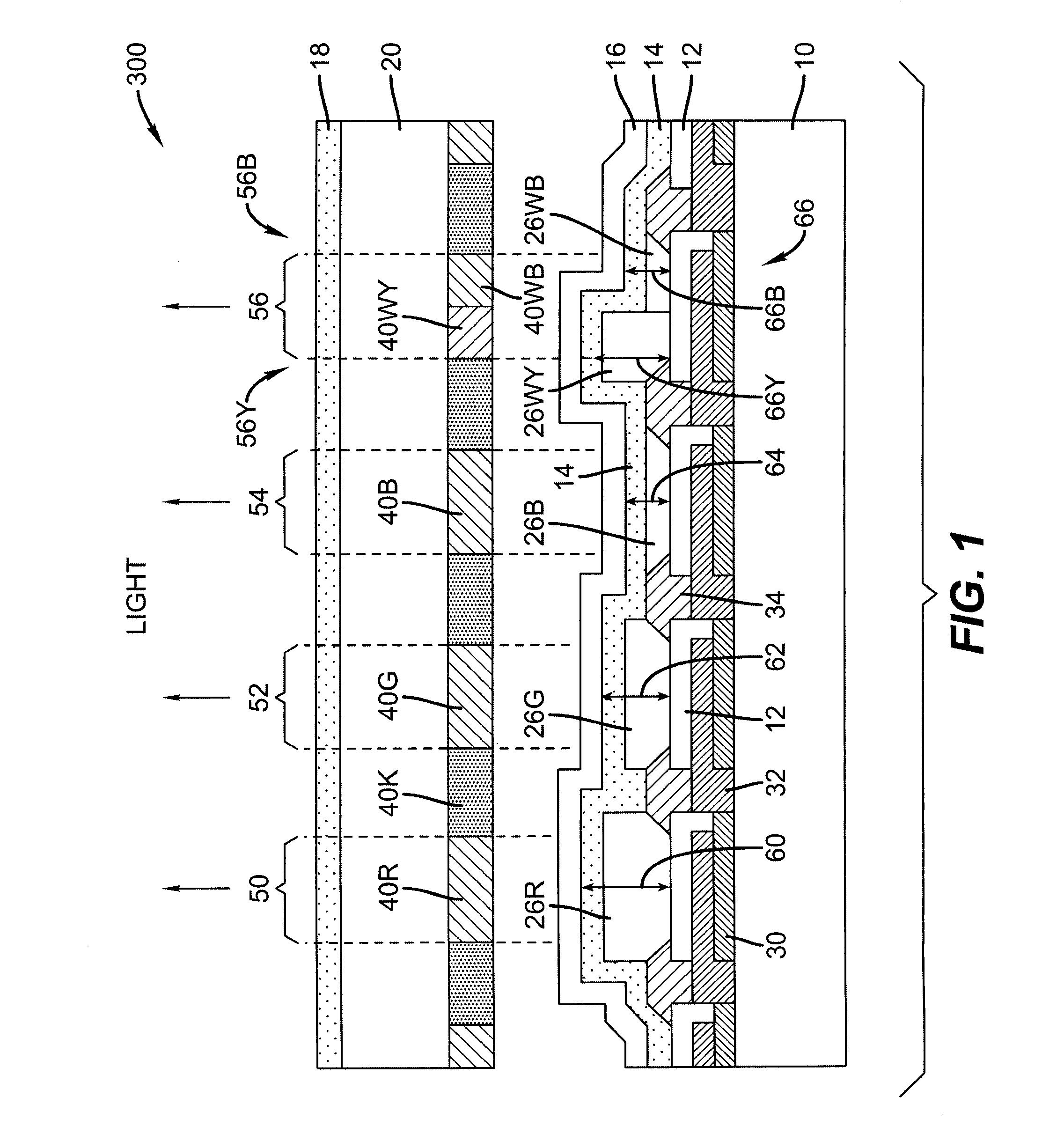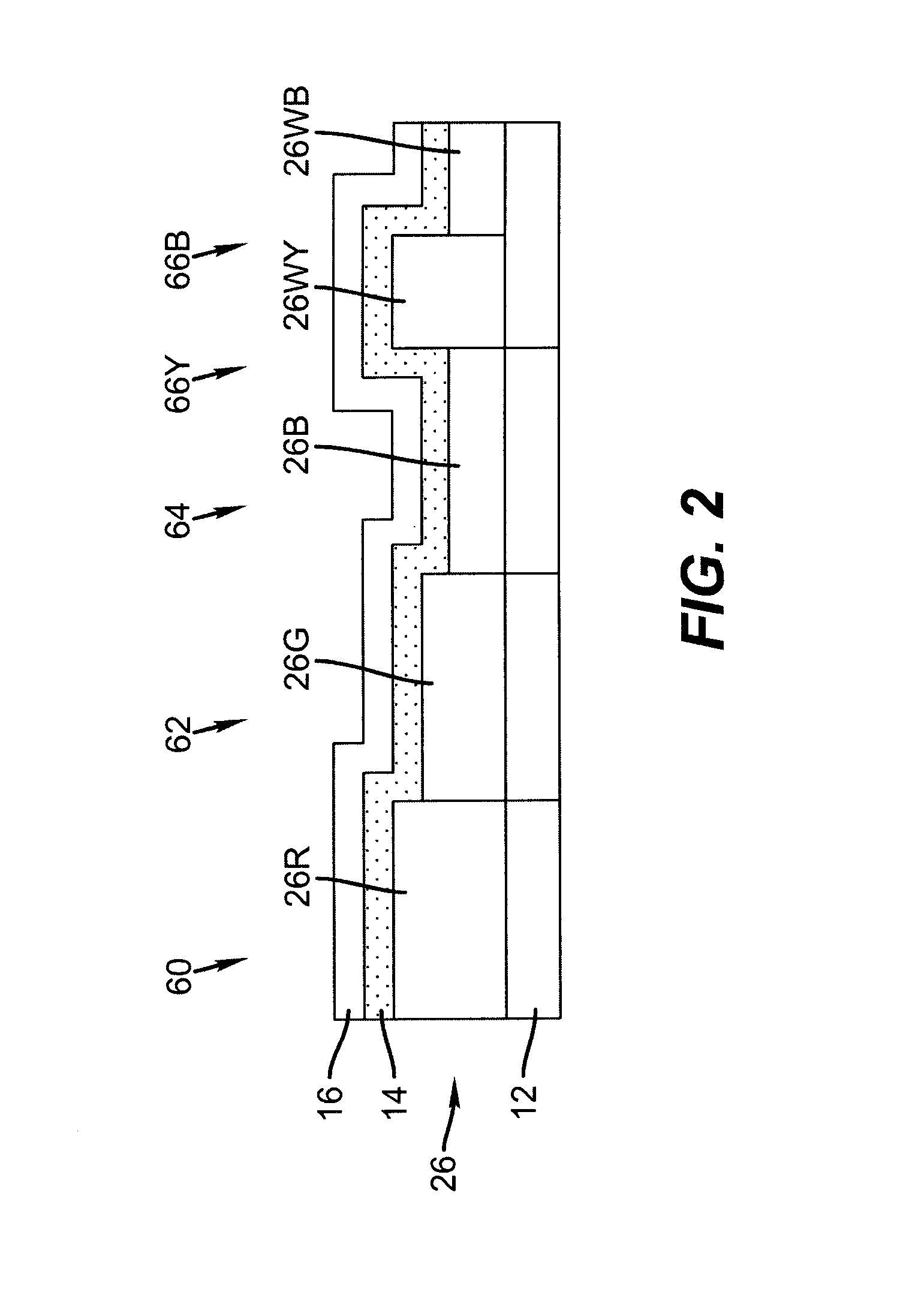LED device having improved light output
a technology of led devices and light output, which is applied in the manufacture of electrode systems, cold cathode manufacturing, and electric discharge tubes/lamps, etc., can solve the problems of reducing device efficiency, difficult to scale to large substrates, and patterned organic material deposition technology, so as to increase the light output and manufacturability of led devices, and reduce any angular color change
- Summary
- Abstract
- Description
- Claims
- Application Information
AI Technical Summary
Benefits of technology
Problems solved by technology
Method used
Image
Examples
Embodiment Construction
[0036]Referring to FIG. 1, an exemplary embodiment of a light-emitting diode device according to the present invention comprises a substrate 10, a reflective electrode 12, and a semi-transparent electrode 16 formed over the substrate 10. Either the reflective electrodes 12 or semi-transparent electrodes 16 are patterned to form a plurality of independently-controllable light-emitting elements 50, 52, 54, and 56. As shown in FIG. 1, for example, reflective electrode 12 is patterned. The independently-controllable light-emitting elements may be controlled, for example by thin-film electronic components 30 formed on the substrate 10. The other electrode (e.g. 16) may be unpatterned and electrically common to all of the light-emitting elements 50, 52, 54, and 56. An unpatterned white-light-emitting layer 14 is formed between the reflective electrode 12 and the semi-transparent electrode 16 and may comprise a plurality of layers. The reflective electrode 12, semi-transparent electrode 16...
PUM
 Login to View More
Login to View More Abstract
Description
Claims
Application Information
 Login to View More
Login to View More - R&D
- Intellectual Property
- Life Sciences
- Materials
- Tech Scout
- Unparalleled Data Quality
- Higher Quality Content
- 60% Fewer Hallucinations
Browse by: Latest US Patents, China's latest patents, Technical Efficacy Thesaurus, Application Domain, Technology Topic, Popular Technical Reports.
© 2025 PatSnap. All rights reserved.Legal|Privacy policy|Modern Slavery Act Transparency Statement|Sitemap|About US| Contact US: help@patsnap.com



